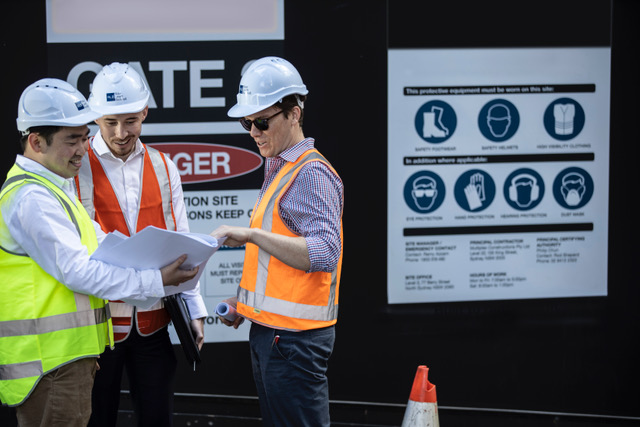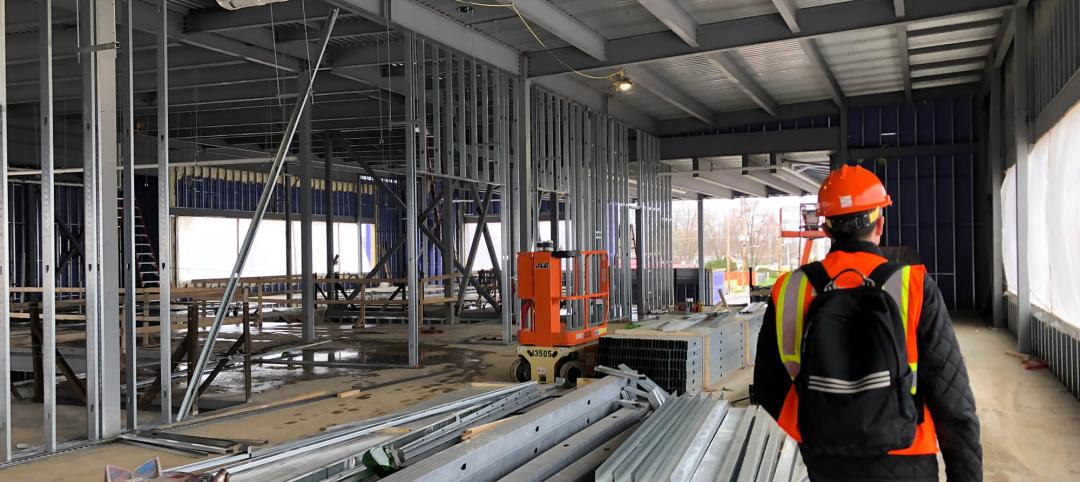The number of considerations that go into starting a construction project are almost too numerous to count. Contracts, materials, labor, deadlines, even weather, to name a few. They vary from project to project, and any one of them can change in an instant, whether it be materials suddenly in short supply, labor that isn’t available for your particular kind of project (is it luxury hospitality or affordable residential?), or an unexpected phenomenon like Covid-19 that makes everything suddenly screech to a halt.
The pandemic seemed to come out of the blue, and it persisted for a couple of years. Many other unexpected issues can also occur without warning. For example, cell tower transmission in Honolulu damaged the crane operating system during the construction of the American Savings Bank, stopping construction for a week until the part could be sourced and replaced. On the same project, even more weirdly, a false missile alert in 2018 sent workers scrambling to leave the project site.
Weather can also be a factor: A sudden deep freeze in Texas in 2021 damaged resin supplies and made commodities that are typically abundant, like paint, in short supply.
Key to surmounting any problems that arise is being up to date on the state of each of the variables and where to go for replacements or replenishments if necessary. Be aware of added costs for any scenario that might play out—for example, if the funds will be needed (and available), or if the design might have to be changed.
Know Your Workforce
At the top of that list is the local workforce. The design and construction team needs to know if it is robust enough and whether available workers have the requisite skills to get the job done. That could be something simple from hanging drywall to doing something more specialized. One-offs like massive art installations in commercial or hospitality projects can be particularly problematic without enough lead time.
Labor needs shift with booms and busts in the economy and projects can suffer if they get caught short of skilled labor. Hawaii, for example, experienced a huge boom in luxury high-rise construction in 2014-15 when towers were popping up all over the place. Developers found themselves in a tough situation where drywall labor was capped out.
In other words, there was a back-up of projects and only a finite number of drywall installers available locally. Same thing with installers of windows and curtainwalls—there just weren’t enough to do the jobs on schedule. Labor had to be flown in from inland locations, paid more and put up in hotels.
In such instances, project managers have to be flexible and knowledgeable enough to do what they have to do, which is hire labor from elsewhere. In Hawaii, for instance, this means getting labor either from one of the other islands or the mainland. This can have an environmental as well as financial impact, especially in a place like Hawaii where the shortage can be particularly acute.
There are unseen and unanticipated problems that come with this kind of demanding work schedule. While it’s good for the economy and laborers’ incomes, it often results in serious worker burnout. Everyone working longer hours, including weekends and holidays, leads to shortened careers while others make dramatic career path shifts based on burnout. It’s a real challenge that needs to be managed better industry-wide and especially significant during the “Great Resignation.”
Anticipate Potential Increased Workforce Costs
Increased cost is sometimes the hardest thing to reconcile. In the 2014-15 example, the total cost of construction goes up as much as 10% if you fly workers in from the mainland or from destinations that are more than four hours’ drive time away. Project managers also have to calculate the cost of housing the workers, which can be substantial, and the fact that they might be slower given the lack of familiarity with the local market.
Situations like this don’t happen that often but when they occur, it becomes a huge topic of conversation and a huge concern among project managers and workers. There’s no question that a lack of available labor means the cost of the project is going to go up; you’ll be paying premiums on overtime until you hit a point where not even that will satisfy demand.
Skilled Labor and Specialty Projects
Project managers know that incurring additional costs where specialty projects are concerned is a given. Hiring workers with special, costlier skills is acceptable, as long as the cost is built into the design budget, like an art installation in a two- to three-story-high glassed-in lobby, or the unusual fabrication of a golden dome for a mosque at the Muslim Community Center of Louisville, Ky., that was fabricated in Cincinnati, Ohio, and completed just weeks before the start of the Ramadan holiday. Labor can be even more complicated if you need to find a fabricator who could build to strict religious standards as well as the client’s.
Terrazzo flooring is another unusual material that requires a special skill set to lay down properly. Terrazzo specialists are rare in some locations, so the design team needs to be aware of the potential costs involved. But most designers and architects who know local markets rely on concrete aggregates that are attractive in their end use and readily available. The local labor force may be familiar with alternates, narrowing the margin of error.
They are also aware, for instance, of how cement can be manipulated to mimic other finishes with more of a high-end look. Same material, just a different way of polishing it. What workers and project managers know is that it’s about achieving a look with what’s already available and doing so at a reasonable price.
The local workforces in some states are also up on environmental concerns like solar panels which most agree are not as common as they could be. There have been government backed incentives to install them on residences creating savings on electric bills. The environmental impact of construction benefits by making the best use of locally available product and labor in any project.
Money savings from energy conservation initiatives in any kind of project generally get funneled back into the project to add more curb appeal to anything being built in what is an extraordinarily busy and booming residential and commercial market. Any money saved on commercial projects will likely go into upgrading mechanical or electrical plants to enhance efficiency.
New methods tend to scare people—no one wants to be the guinea pig. But a sure thing is a product or technology that blows people away or carries a cost savings, either up front or long term, that is enticing enough to get them to take on the risk of the unknown or new technology. Project managers must be on top of new developments to know how to sell them.
About Paul Belshoff
Paul Belshoff is Resident Manager for Rider Levett Bucknall currently working on Maui. Over the course of his career with RLB, he has contributed to a portfolio of landmark developments and renovation projects around Hawaii totaling more than $500 million in construction value. He draws on his background in engineering to deliver exceptional properties, applying ethical, economical and practical solutions to mitigate project risks and produce high-value results for his clients.
About Rider Levett Bucknall
Rider Levett Bucknall is an award-winning international firm known for providing project management, construction cost consulting and related property and construction advisory services at all stages of the design and construction process. The firm was voted #1 Cost Consultant in World Architecture Magazine for 2016, 2017, 2018 and 2019. Rider Levett Bucknall’s North American practice has offices in 21 cities across North America, including Boston, Calgary, Chicago, Denver, Hilo, Honolulu, Las Vegas, Los Angeles, Maui, New York, Phoenix, Portland, San Francisco, San Jose, Seattle, Toronto, Tucson, Waikoloa, and Washington, D.C. With more than 3,600 employees worldwide, Rider Levett Bucknall brings unparalleled value and service to its prestigious group of clients, through its robust experience and high-level expertise. The firm enjoys a professional heritage that spans more than 230 years, and it continues to be a global leader in the construction industry throughout the Americas, Africa, Asia, Europe, the Middle East and Oceania.
Related Stories
Contractors | Jun 4, 2024
Contractors expect to spend more time on prefabrication, according to FMI study
Get ready for a surge in prefabrication activity by contractors. FMI, the consulting and investment banking firm, recently polled contractors about how much time they were spending, in craft labor hours, on prefabrication for construction projects. More than 250 contractors participated in the survey, and the average response to that question was 18%. More revealing, however, was the participants’ anticipation that craft hours dedicated to prefab would essentially double, to 34%, within the next five years.
Airports | Jun 3, 2024
SOM unveils ‘branching’ structural design for new Satellite Concourse 1 at O’Hare Airport
The Chicago Department of Aviation has revealed the design for Satellite Concourse 1 at O’Hare International Airport, one of the nation’s business airports. Designed by Skidmore, Owings & Merrill (SOM), with Ross Barney Architects, Juan Gabriel Moreno Architects (JGMA), and Arup, the concourse will be the first new building in the Terminal Area Program, the largest concourse area expansion and revitalization in the airport’s almost seven-decade history.
Construction Costs | Jun 3, 2024
Escalation: Predicting project costs in a volatile market
Thad Berkes, Chief Cost Estimator, Design Collaborative, shares that one of the major hurdles that Design Collaborative attempts to forecast for its commercial construction projects is escalation.
Multifamily Housing | Jun 3, 2024
Grassroots groups becoming a force in housing advocacy
A growing movement of grassroots organizing to support new housing construction is having an impact in city halls across the country. Fed up with high housing costs and the commonly hostile reception to new housing proposals, advocacy groups have sprung up in many communities to attend public meetings to speak in support of developments.
MFPRO+ News | Jun 3, 2024
New York’s office to residential conversion program draws interest from 64 owners
New York City’s Office Conversion Accelerator Program has been contacted by the owners of 64 commercial buildings interested in converting their properties to residential use.
MFPRO+ News | Jun 3, 2024
Seattle mayor wants to scale back energy code to spur more housing construction
Seattle’s mayor recently proposed that the city scale back a scheduled revamping of its building energy code to help boost housing production. The proposal would halt an update to the city’s multifamily and commercial building energy code that is scheduled to take effect later this year.
Mass Timber | May 31, 2024
Mass timber a big part of Western Washington University’s net-zero ambitions
Western Washington University, in Bellingham, Wash., 90 miles from Seattle, is in the process of expanding its ABET-accredited programs for electrical engineering, computer engineering and science, and energy science. As part of that process, the university is building Kaiser Borsari Hall, the 54,000-sf new home for those academic disciplines that will include teaching labs, research labs, classrooms, collaborative spaces, and administrative offices.
Construction Costs | May 31, 2024
Despite challenges, 2024 construction material prices continue to stabilize
Gordian’s Q2 2024 Quarterly Construction Cost Insights Report indicates that supply chain issues notwithstanding, many commodities are exhibiting price normalization.
University Buildings | May 30, 2024
Washington University School of Medicine opens one of the world’s largest neuroscience research buildings
In St. Louis’ Cortex Innovation District, Washington University School of Medicine recently opened its new Jeffrey T. Fort Neuroscience Research Building. Designed by CannonDesign and Perkins&Will, the 11-story, 609,000-sf facility is one of the largest neuroscience buildings in the world.
Affordable Housing | May 30, 2024
General contractor’s keys to a successful affordable housing project
General contractors can have tremendous influence over a project’s success in terms of schedule, budget, and quality. However, to ensure a project is put on this path, there are a few factors that must be considered.

















